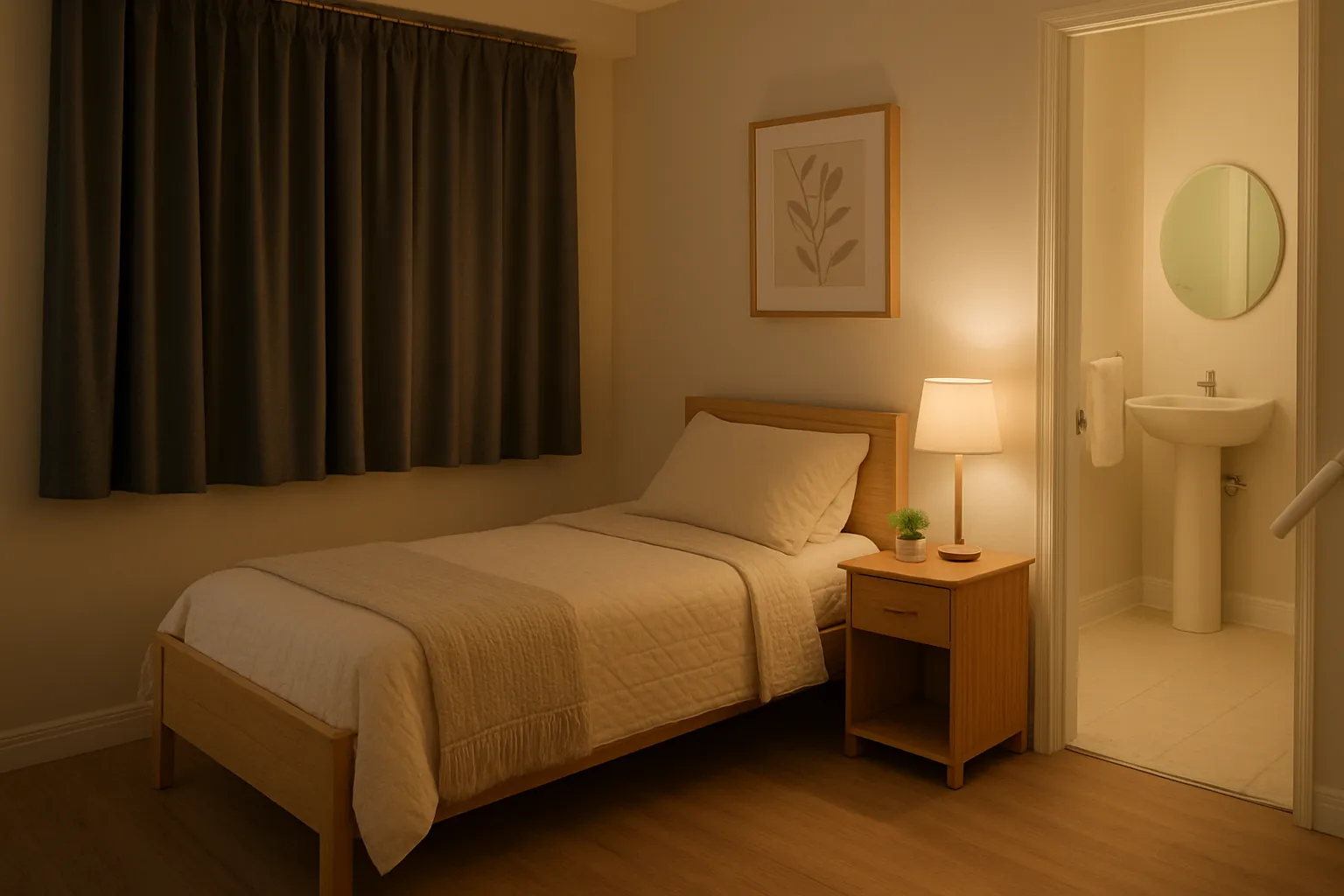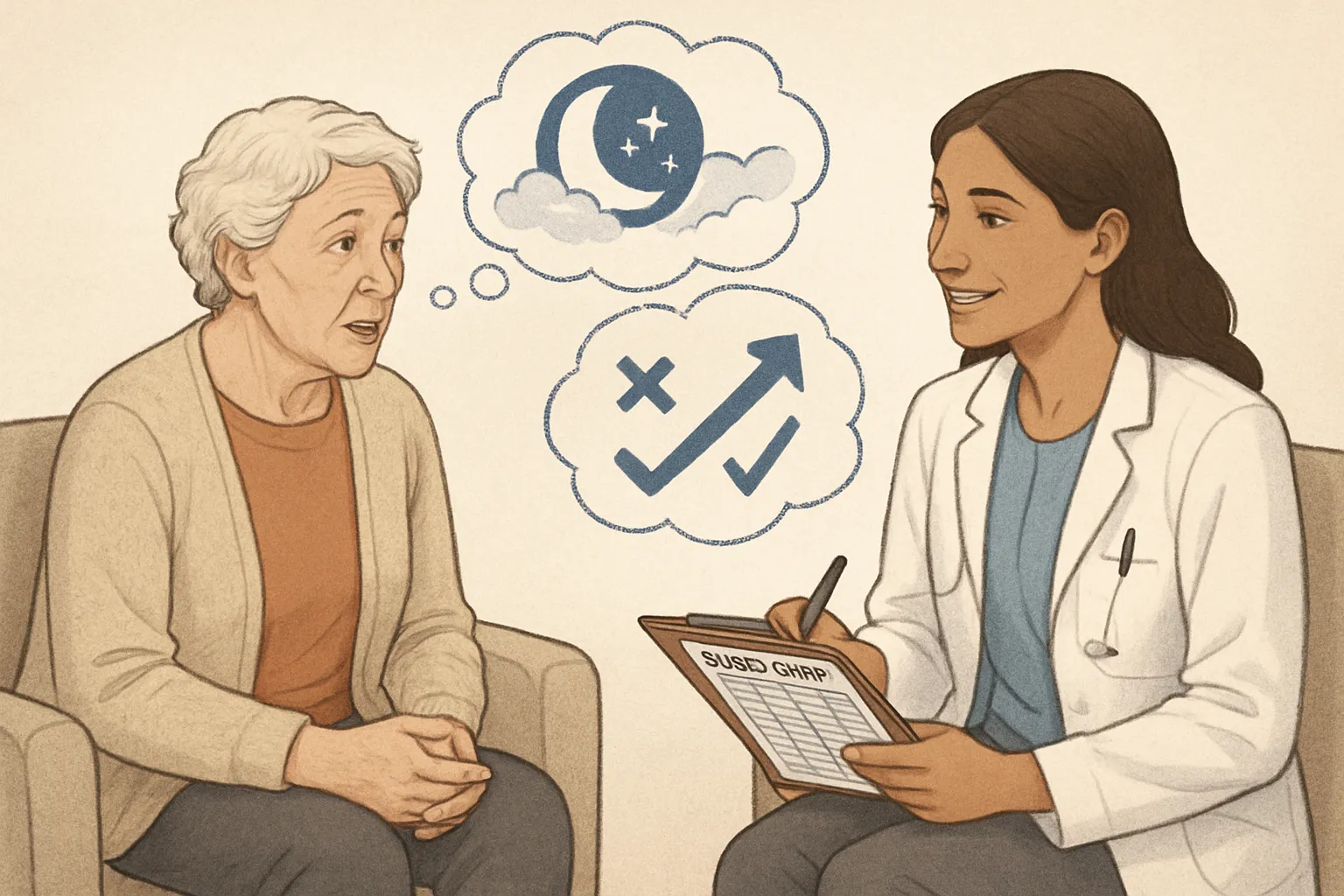Insomnia in the Elderly: Understanding Challenges and Tailored Solutions
Published by Dr. Patricia Martinez | Geriatric Sleep Medicine Specialist
 Elderly insomnia challenges and solutions
Elderly insomnia challenges and solutions
Insomnia is a common and often debilitating condition that affects a significant portion of the elderly population. As we age, our sleep patterns naturally change, but these changes can sometimes develop into clinical insomnia that significantly impacts quality of life, cognitive function, and overall health. This comprehensive guide explores the unique challenges of insomnia in older adults and provides evidence-based solutions tailored specifically to this population.
Understanding Insomnia in the Elderly
Prevalence and Impact
Statistics:
- High prevalence: 30-50% of adults over 65 experience insomnia symptoms
- Chronic nature: Insomnia tends to be more persistent in older adults
- Health impact: Associated with increased risk of falls, depression, and cognitive decline
- Quality of life: Significant reduction in daily functioning and well-being
Unique Challenges:
- Multiple health conditions: Often have several chronic diseases
- Medication interactions: Complex medication regimens can affect sleep
- Social isolation: Reduced social engagement can impact sleep patterns
- Caregiver stress: Family members may also experience sleep disruption
Age-Related Sleep Changes
Normal Aging Changes:
- Sleep architecture: Reduced deep sleep (N3) and REM sleep
- Sleep efficiency: More time spent awake in bed
- Circadian rhythm: Earlier sleep onset and wake times
- Sleep fragmentation: More frequent awakenings during the night
When Changes Become Problematic:
- Excessive daytime sleepiness: Interferes with daily activities
- Difficulty falling asleep: Takes more than 30 minutes to fall asleep
- Frequent awakenings: More than 3-4 times per night
- Early morning awakening: Waking up 2+ hours before desired time
 Elderly sleep environment optimization
Elderly sleep environment optimization
Causes of Insomnia in the Elderly
Medical Conditions
Chronic Diseases:
- Arthritis: Pain and stiffness can disrupt sleep
- Heart disease: Congestive heart failure, angina, arrhythmias
- Respiratory conditions: COPD, asthma, sleep apnea
- Neurological disorders: Parkinson's disease, Alzheimer's, stroke
- Gastrointestinal issues: GERD, irritable bowel syndrome
- Endocrine disorders: Diabetes, thyroid problems
Pain and Discomfort:
- Chronic pain: Back pain, joint pain, neuropathy
- Restless legs syndrome: More common in older adults
- Periodic limb movements: Involuntary leg movements during sleep
- Muscle cramps: Nocturnal leg cramps
Medication Effects
Common Culprits:
- Diuretics: Increased nighttime urination
- Beta-blockers: Can cause insomnia and nightmares
- Corticosteroids: Stimulating effects
- Decongestants: Stimulant properties
- Antidepressants: Some can cause sleep disruption
- Pain medications: Opioids can fragment sleep
Medication Timing:
- Dosing schedules: Some medications should be taken earlier in the day
- Drug interactions: Multiple medications can compound sleep effects
- Side effects: New medications should be monitored for sleep impact
Psychological and Social Factors
Mental Health:
- Depression: Common in elderly, often underdiagnosed
- Anxiety: Worry about health, finances, family
- Grief: Loss of loved ones, independence, or health
- Stress: Caregiving responsibilities, life changes
Social Factors:
- Isolation: Reduced social engagement
- Retirement: Loss of daily structure and routine
- Financial concerns: Fixed income, medical expenses
- Family dynamics: Changing relationships with adult children
 Elderly insomnia CBT-I support
Elderly insomnia CBT-I support
Assessment and Diagnosis
Comprehensive Evaluation
Medical History:
- Current medications: Complete medication review
- Medical conditions: Chronic diseases and their management
- Sleep history: Previous sleep problems and treatments
- Family history: Sleep disorders in family members
Sleep Assessment:
- Sleep diary: 2-week record of sleep patterns
- Sleep questionnaires: Validated tools for elderly populations
- Bed partner interview: Observations of sleep behavior
- Actigraphy: Objective sleep monitoring if needed
Physical Examination:
- Neurological assessment: Check for movement disorders
- Cardiovascular evaluation: Heart and lung function
- Musculoskeletal exam: Joint mobility and pain assessment
- Mental status: Cognitive function and mood evaluation
Differential Diagnosis
Sleep Disorders:
- Primary insomnia: Sleep difficulty not due to other causes
- Sleep apnea: Breathing pauses during sleep
- Restless legs syndrome: Uncomfortable sensations in legs
- Periodic limb movement disorder: Involuntary movements
Medical Conditions:
- Depression: Can present with sleep problems
- Anxiety disorders: Excessive worry affecting sleep
- Dementia: Cognitive changes affecting sleep-wake cycles
- Chronic pain: Pain interfering with sleep
Treatment Approaches for Elderly Insomnia
Non-Pharmacological Interventions
Cognitive Behavioral Therapy for Insomnia (CBT-I):
- Adapted for elderly: Modified techniques for older adults
- Group or individual: Both formats can be effective
- Caregiver involvement: Family members can support treatment
- Long-term benefits: Sustained improvement in sleep quality
Sleep Hygiene Education:
- Environment optimization: Bedroom setup for better sleep
- Routine establishment: Consistent sleep-wake schedule
- Activity modification: Exercise timing and intensity
- Dietary adjustments: Caffeine, alcohol, and meal timing
Relaxation Techniques:
- Progressive muscle relaxation: Systematic muscle tension and release
- Deep breathing: Diaphragmatic breathing exercises
- Mindfulness meditation: Present-moment awareness
- Guided imagery: Mental visualization for relaxation
 CBT-I alternative treatment options
CBT-I alternative treatment options
Pharmacological Treatment
Melatonin:
- Natural hormone: Regulates sleep-wake cycles
- Dosage: 0.5-3 mg, taken 1-2 hours before bed
- Safety: Generally well-tolerated in elderly
- Effectiveness: May help with circadian rhythm disorders
Prescription Medications:
- Non-benzodiazepine hypnotics: Zolpidem, zaleplon, eszopiclone
- Benzodiazepines: Generally avoided due to side effects
- Antidepressants: Trazodone, mirtazapine (off-label use)
- Antihistamines: Diphenhydramine (short-term use only)
Important Considerations:
- Start low, go slow: Begin with lowest effective dose
- Monitor side effects: Increased sensitivity in elderly
- Avoid long-term use: Risk of dependence and tolerance
- Regular review: Periodic medication assessment
Lifestyle Modifications
Physical Activity:
- Regular exercise: 150 minutes per week of moderate activity
- Timing: Avoid vigorous exercise within 3 hours of bedtime
- Type: Walking, swimming, tai chi, gentle yoga
- Benefits: Improves sleep quality and reduces stress
Diet and Nutrition:
- Caffeine reduction: Limit after 2 PM
- Alcohol moderation: Can fragment sleep
- Meal timing: Avoid large meals close to bedtime
- Hydration: Balance fluid intake to reduce nocturia
Social Engagement:
- Community activities: Senior centers, clubs, volunteer work
- Family connections: Regular contact with loved ones
- Mental stimulation: Reading, puzzles, learning new skills
- Purpose and meaning: Maintaining sense of contribution
Special Considerations for Elderly Populations
Cognitive Impairment
Dementia and Sleep:
- Sundowning: Increased confusion and agitation in evening
- Circadian disruption: Disrupted sleep-wake cycles
- Caregiver education: Strategies for managing sleep problems
- Environmental modifications: Safe sleep environment
Treatment Adaptations:
- Simplified instructions: Clear, step-by-step guidance
- Caregiver involvement: Family members support treatment
- Behavioral approaches: Focus on routine and environment
- Medication caution: Increased sensitivity to side effects
Caregiver Support
Education and Training:
- Sleep hygiene: Understanding good sleep practices
- Behavioral strategies: Managing challenging sleep behaviors
- Safety considerations: Preventing falls and accidents
- Self-care: Caregiver sleep and stress management
Respite Care:
- Temporary relief: Short-term care to give caregivers breaks
- Professional support: Home health aides, adult day care
- Family assistance: Coordinating help from other family members
- Community resources: Local support groups and services
Safety Considerations
Fall Prevention:
- Bedroom safety: Remove trip hazards, adequate lighting
- Bathroom safety: Grab bars, non-slip surfaces
- Medication review: Avoid medications that increase fall risk
- Emergency planning: Easy access to help if needed
Medication Safety:
- Drug interactions: Review with healthcare provider
- Side effects: Monitor for dizziness, confusion
- Dosage adjustment: May need lower doses than younger adults
- Regular review: Periodic medication assessment
Monitoring and Follow-up
Progress Assessment
Sleep Quality Measures:
- Sleep diary: Continued monitoring of sleep patterns
- Questionnaires: Regular assessment of sleep quality
- Functional improvement: Better daytime functioning
- Caregiver observations: Family member input on progress
Treatment Adjustments:
- Response evaluation: Assess effectiveness of interventions
- Side effect monitoring: Watch for adverse effects
- Dosage modifications: Adjust medications as needed
- Alternative approaches: Try different strategies if needed
Long-term Management
Maintenance Strategies:
- Continued practice: Maintain behavioral techniques
- Regular review: Periodic assessment with healthcare provider
- Lifestyle maintenance: Ongoing healthy sleep habits
- Social support: Continued engagement and support
Prevention of Relapse:
- Stress management: Ongoing stress reduction techniques
- Health maintenance: Regular medical check-ups
- Social connection: Maintain social engagement
- Mental health: Monitor and treat depression/anxiety
Conclusion
Insomnia in the elderly is a complex condition that requires a comprehensive, multidisciplinary approach. While aging brings natural changes to sleep patterns, clinical insomnia should not be considered an inevitable part of growing older. With proper assessment, tailored treatment, and ongoing support, most older adults can achieve significant improvements in their sleep quality and overall well-being.
The key to successful treatment lies in understanding the unique challenges faced by elderly individuals and developing personalized solutions that address their specific needs. This includes considering medical conditions, medications, psychological factors, and social circumstances that may contribute to sleep problems.
By implementing evidence-based treatments, making appropriate lifestyle modifications, and providing adequate support to both patients and caregivers, healthcare providers can help elderly individuals with insomnia achieve better sleep and improved quality of life. The goal is not just to treat the sleep problem, but to enhance overall health, independence, and well-being in the later years of life.
Key Takeaways
- Insomnia affects 30-50% of adults over 65 and can significantly impact quality of life
- Multiple factors contribute to insomnia in the elderly including medical conditions, medications, and social factors
- Comprehensive assessment is essential for accurate diagnosis and effective treatment
- Non-pharmacological interventions like CBT-I are often the first-line treatment
- Pharmacological treatment requires careful consideration of side effects and interactions
- Caregiver support and education are crucial components of successful treatment
- Safety considerations including fall prevention are essential for elderly populations
- Long-term management and monitoring are important for sustained improvement
References
- American Academy of Sleep Medicine. (2014). International Classification of Sleep Disorders, 3rd Edition.
- National Sleep Foundation. (2020). Sleep in America Poll: Sleep and Aging.
- Morin, C. M., et al. (2016). Cognitive behavioral therapy for insomnia in older adults. Sleep Medicine Clinics, 11(1), 1-16.
- Bloom, H. G., et al. (2009). Evidence-based recommendations for the assessment and management of sleep disorders in older persons. Journal of the American Geriatrics Society, 57(5), 761-789.
- Vaz Fragoso, C. A., & Gill, T. M. (2007). Sleep complaints in community-living older persons: a multifactorial geriatric syndrome. Journal of the American Geriatrics Society, 55(11), 1853-1866.
Related Articles
- How Digital Sleep Diaries Are Changing Insomnia Treatment in 2025
- Women's Sleep Health: How Hormonal Cycles Impact Sleep Quality Throughout Life
- Insomnia and Snoring: Can Poor Sleep Quality Worsen Airway Obstruction?
